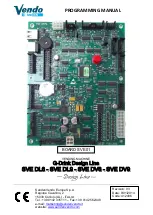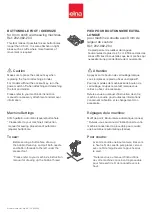
24
BA_327D_A2_200715_en.doc
4.8
Plunger stop
Frequently it is necessary when trimming fabric to sew over different fabric
thicknesses at the same work piece, whereby the penetration depth of the needle,
viewed from the upper side of the sewing material, must always remain the same.
The plunger built- into our machines carries out this work automatically in cooperation
with an adjustable plunger stop mounted on the stitch plate.
4.8.1
Adjusting the plunger stop (Fig. 13)
C A U T I O N ! Danger of injury!
When adjusting in the area of the stitch plate there is
danger of
injury
, especially a danger of crushing fingers due to accidental
activation of the pedals!
First set the plunger with the stitch depth regulation button so high that the required
thickness of the sewing material, in most cases the outside fabric, is stitched blind
satisfactory.
Then the plunger stop supported on the stitch plate is adjusted with the knurled screw
(partly also hexagon nut) in such a way, that the sewing material is pressed from
above onto the plunger.
Now the plunger, under pressure from a spring, can rise above several layers of fabric,
cross seams, thickenings etc lying above each other only to such a height, that the
upper fabric layers and not the outside fabric is stitched.
The above adjustment requires some technical knowledge and experience.
Care must be taken that the pressure spring (1) is only adjusted as much as is
necessary for the correct effect of the plunger stop.
This keeps the pressure of the plunger onto the plunger stop as low as possible and
less stress is put on stitch plate and machine.
With adjustment of the plunger pressure at the works, the screw for the plunger
regulation (2) is flush with the plunger guide (4).
By turning the plunger adjusting screw (3), including the screw for the plunger
regulation (2), to the right it increases, to the left it decreases.
Содержание 327D
Страница 5: ...1 BA_327D_A2_200715_en doc...
Страница 6: ...2 BA_327D_A2_200715_en doc...
Страница 15: ...11 BA_327D_A2_200715_en doc Fig 1...











































